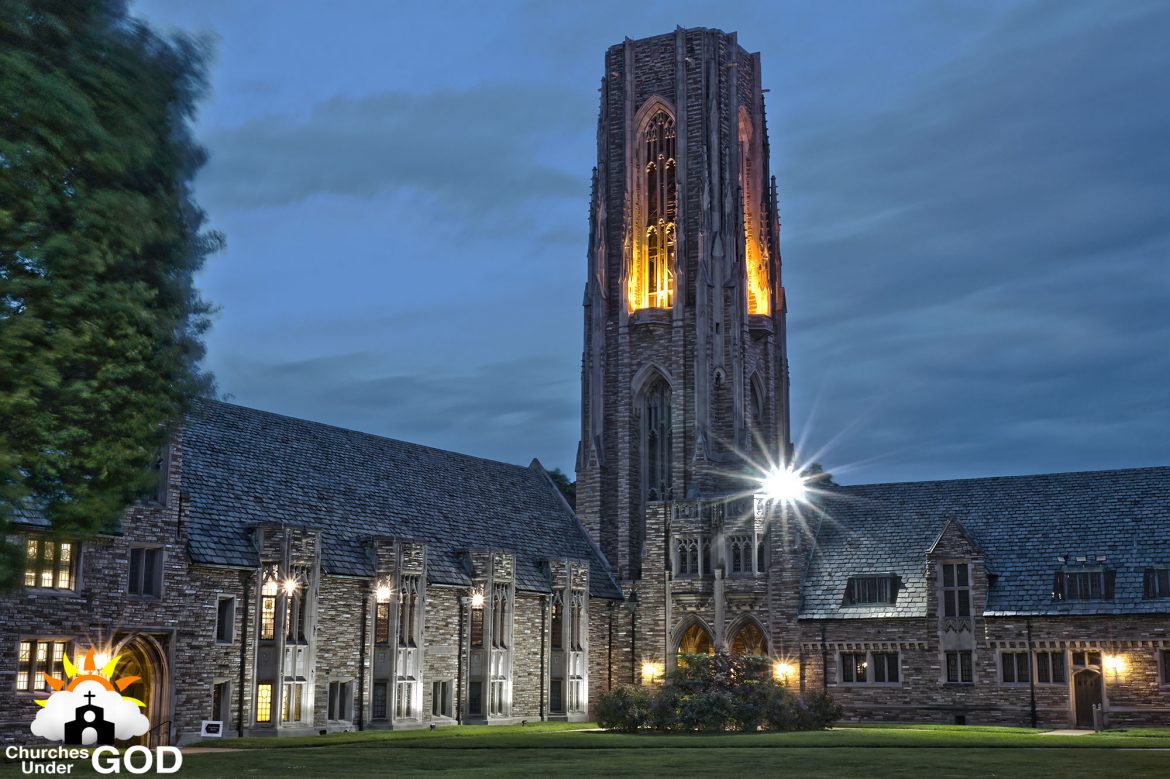
Concordia Seminary
Founded: 1839
Denomination: Lutheran
Architectural Style: Gothic
801 Seminary Dr.
St. Louis, MO. 63105
(314) 505-7000
Website
In the 1830’s many German protestants were being forced to join the Prussian Union and were being pressured to practice their religion in Prussian-approved churches run my Prussian-approved pastors. The removal of Lutheran ministers from area churches around Dresden, Germany upset many members of these congregations. This forcible removal of their clergy pushed many to pursue the idea of relocating to America, where they had heard that religion could be practiced freely without government intervention.
Martin Stephan, the pastor at St. John Lutheran Church in Dresden, Germany, organized what was known as the Saxon Lutheran Immigration of 1838-39. This consisted of Lutherans with dreams of practicing their faith how they wished in America. However, in these days this was a very expensive and dangerous venture to travel so far. Many members had to raise “Immigration Funds” by borrowing from wealthy members in the community with promises to pay the money back once they settled in America. What began as a plan to charter 1 ship for a small group had exploded into 700 Lutherans wishing to make the voyage and requiring the chartering of 5 sailing ships. Many family members and friends had to say good-bye, most likely for the last time, before their long trek for America in the late Fall of 1838. By January of 1839, four of the five ships had arrived on the shores of New Orleans, as word spread that the 5th ship was lost at sea off the coast of France with no survivors.
With their sights set on St. Louis and their final destination of Perry County, Missouri, the remaining travelers boarded 4 steamboats and embarked north, up the Mississippi River. Their accommodations for their journey was anything but comfortable since they were traveling as mere ‘deck passengers.’ This meant that they were confined to the deck of the boats for eating and sleeping, which made their winter ride very cold. At this time there were no locks or dams on the Mississippi River, which meant that ice floating from the river up north was free to sail all the way down to the south, adding to the frigid temperatures on the river. Finally, in late May of 1839 they arrived in St. Louis to join the community of other Germans. Most continued their horse and wagon journey to Perry County Missouri, as about 200 chose to remain in St. Louis. It is this group that became the congregation of Trinity Lutheran Church, with their first pastor Otto Herman Walther, older brother of Carl Ferdinand Wilhelm Walther.
Unfortunately, to the dismay of the new congregation in St. Louis, O. H. Walther only served as pastor of Trinity Lutheran Church for a little more than a year and then died as a result of catching typhoid fever. The congregation then called upon C.F. W. Walther to become their new pastor, however, because of some issues within the Perry County settlement that required his attention, he declined. Despite some early challenges the larger group of Lutherans faced in Perry County, they continued to grow into their new settlements named after towns from their homeland in Germany. These communities consisted of Wittenberg, Frohna, Altenburg, Perryville, Friedenberg, Farrar, Crosstown, Longtown, and Uniontown. Once issues within the new community in Perry County were resolved, C.F. W. Walther answered the 2nd call to become pastor at Trinity Lutheran Church in St. Louis with his return.
After much growth with the church Pastor Walther asked his congregation in 1847 for their support in creating a church body with the sole mission of training pastors for the ministry. The congregation accepted his request and founded the “Joint Synod of Missouri, Ohio and Other States”, later known as the Lutheran Church Missouri Synod. After the synod was formed, Walther moved the seminary, which had earlier resided in Perry County, to St. Louis where it became Concordia Seminary and he became its first president. Under Pastor Walther’s guidance the synod saw such advancements as; a “publishing house,” Der Lutheraner newspaper, and the first Lutheran Hymnal. Also with the birth of the new synod in the Church, like-minded Lutheran congregations around the mid-west have grown more united.

